Tech
How scientists want to make you young again
Published
2 years agoon
By
Terry Power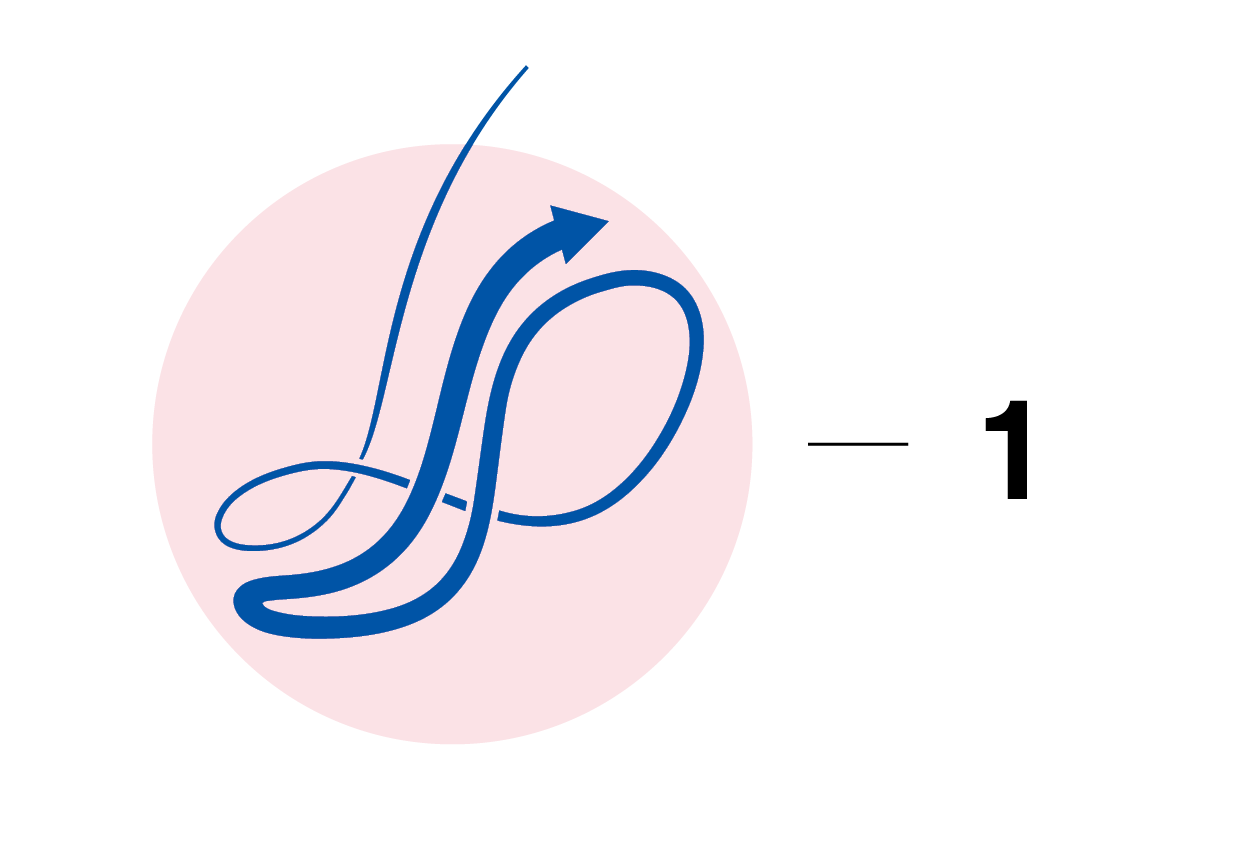
A little over 15 years ago, scientists at Kyoto University in Japan made a remarkable discovery. When they added just four proteins to a skin cell and waited about two weeks, some of the cells underwent an unexpected and astounding transformation: they became young again. They turned into stem cells almost identical to the kind found in a days-old embryo, just beginning life’s journey.
At least in a petri dish, researchers using the procedure can take withered skin cells from a 101-year-old and rewind them so they act as if they’d never aged at all.
Now, after more than a decade of studying and tweaking so-called cellular reprogramming, a number of biotech companies and research labs say they have tantalizing hints the process could be the gateway to an unprecedented new technology for age reversal. By applying limited, controlled doses of the reprogramming proteins to lab animals, the scientists say, they are seeing evidence that the procedure makes the animals—or at least some of their organs—more youthful.
One of the key promoters of this idea, Richard Klausner, took the stage in June at a glitzy, $4,000-per-ticket retreat in San Diego, where he flashed data from unpublished experiments in which sick mice bounced back to health after undergoing the experimental treatment.
Klausner was pitching nothing less than “medical rejuvenation”—a means of taking old animals and making them “young.” He is the organizer and chief scientist of Altos Labs, a new research company seeded with more than $3 billion from ultra-wealthy figures in Silicon Valley and oil money from the Persian Gulf. Klausner and his financiers had swept up dozens of top scientists—offering salaries of $1 million and more—and set them to work on a technology the company now calls “rejuvenation programming.”
It seems to work at least in part by resetting what’s called the epigenome—chemical marks on DNA that control which genes are turned on, or off, in a cell. In aging, some of these markers get flipped to the wrong positions. Reprogramming is a technology that can flip them back. But it can also change cells in dangerous ways, even causing cancer.
The objective of Altos is to tame this phenomenon, understand it, and eventually apply it as a treatment to reverse a wide range of diseases. This may be possible, Klausner says, because youthful cells have more resilience and can bounce back from biological stress in ways old ones don’t. And Klausner has data to suggest it might already be working. During his talk, he showed slides marked “Confidential” claiming that fat mice had recovered from diabetes after treatment, and that others were able to survive normally lethal doses of painkillers—all thanks to a healthy dose of the medical rejuvenation.
“We think we can turn back the clock,” he told the audience.
Klausner is the former head of the National Cancer Institute and onetime leader for global health at the Gates Foundation. He is a heavy hitter who has also been behind some of today’s most high-profile biotech ventures, like the cancer blood-test company Grail. Yet even for him, rejuvenation is wildly ambitious. That is because if you can make cells act younger, healthier, and more resilient, you might have a general-purpose means of forestalling many diseases all at once. “This is the opposite of precision medicine,” Klausner said.
Fountain of rejuvenation
To be sure, the word “rejuvenation” sounds suspicious, like a conquistador’s quest or a promise made on a bottle of high-priced face cream. Yet rejuvenation is all around us, if you look. Millions of babies are born every year from the aging sperm and egg cells of their parents. Cloning of animals is another example. When Barbra Streisand had her 14-year-old dog cloned, cells from its mouth and stomach were returned to her as two frolicking puppies. These are all examples of cells being reprogrammed from age to youth—exactly the phenomenon companies like Altos want to capture, bottle, and one day sell.
For now, no one has a firm idea what these future treatments could look like. Some say they will be genetic therapies added to people’s DNA; others expect it’s possible to discover chemical pills that do the job. One proponent of the technology, David Sinclair, who runs an aging-research lab at Harvard University, says it could allow people to live much longer than they do today. “I predict one day it will be normal to go to a doctor and get a prescription for a medicine that will take you back a decade,” Sinclair said at the same California event. “There is no reason we couldn’t live 200 years.”
It’s this type of claim that raises so much skepticism. Critics see ballooning hype, runaway egos, and science that’s on uncertain ground. But the doubters this year were drowned out by the sound of stampeding investors. In addition to Altos, whose $3 billion ranked as possibly the single largest startup fundraising drive in biotech history, the cryptocurrency billionaire Brian Armstrong, the cofounder of Coinbase, helped bring $105 million into his own reprogramming company, NewLimit, whose mission he says is “radical extension of human health span.” Retro Biosciences, which says it wants to “increase healthy human lifespan by 10 years,” raised $180 million.
These huge expenditures are being made despite the fact that scientists still disagree on the causes of aging. Indeed, there’s no real consensus on when in life aging even begins. Some say it starts at conception, while others think it’s at birth or after puberty.
“There is no reason we couldn’t live 200 years.”
David Sinclair, Harvard University
But all the unknowns are part of what makes the reprogramming phenomenon so attractive. Klausner admits that the details of why reprogramming works remain a “complete mystery,” but that too helps explain the sudden rush to invest in the idea. If there is a fountain of youth in the genome, the first to locate it could reinvent medicine and revolutionize how we treat the myriad of diseases that plague our old age.
Alchemy project
To get a reality check on Klausner’s lecture, I asked an embryologist and stem-cell specialist, Alfonso Martinez Arias, to watch a recording. Martinez, whose lab is at the Pompeu Fabra University, in Barcelona, wrote back that he had to hold his stomach while he watched, so grandiose were the claims. “He was evangelical about something which, at the moment, is interesting but very preliminary and [on] shaky ground,” says Martinez. Klausner was speaking “as if he had drunk some Kool-Aid.”
Martinez says that to him, Altos is an alchemy project, the kind that medieval rulers once financed in the search for the philosopher’s stone—a substance they believed could turn lead into gold, not to mention cure all disease. Martinez wasn’t entirely negative, though. “There are people at Altos who know how to do science,” he says. And, he notes, even alchemists ended up making valuable discoveries.
The basic technique Altos is exploring is the procedure discovered in 2006 by the Japanese scientist Shinya Yamanaka, who is now a scientific advisor to the company. The four proteins (now called “Yamanaka factors”) that he and his students identified could cause ordinary cells to turn into potent stem cells, just like those found in embryos. This discovery earned him a Nobel Prize in medicine in 2012.
“Is there any evidence for your $3 billion project?”
Martin Borch Jensen, Gordian Biotechnology
Initially, Yamanaka’s discovery was employed to reprogram cells from patients to make stem cells, which could then be used to try to manufacture transplantable tissues, retina cells, or neurons. Other scientists wondered what would happen if they introduced Yamanaka’s factors into living animals. In 2013, a Spanish team did exactly that, with gruesome results. The mice sprouted tumors called teratomas, blobs of renegade embryonic tissue.
The problem for these reprogrammed mice was that the process doesn’t just make cells young; it also erases their identity and turns them into embryonic stem cells, which don’t belong in an adult. Joe Betts-Lacroix, the CEO and founder of Retro, says researchers were soon asking a new question: “Is there some way that those two phenomena can be uncoupled so that you can have some of the age wiped away, but not have all your identity wiped away so that you become a pile of stem-cell protoplasm and die?”
In 2016, researchers at the Salk Institute in California, headed by Juan Carlos Izpisua Belmonte, reported that the answer might be yes. They genetically engineered mice afflicted with progeria, a condition that causes extremely rapid aging, so that all their cells would make the Yamanaka factors, but only when they were fed a special supplement in their food. That allowed the scientists to turn on the factors for a limited period—just a few hours at a time. Leave the genes on for too long, and the mice got cancer. But with shorter pulses—a tactic now known as partial reprogramming—they didn’t. What’s more, the mice seemed to become healthier and live a bit longer.
How it works
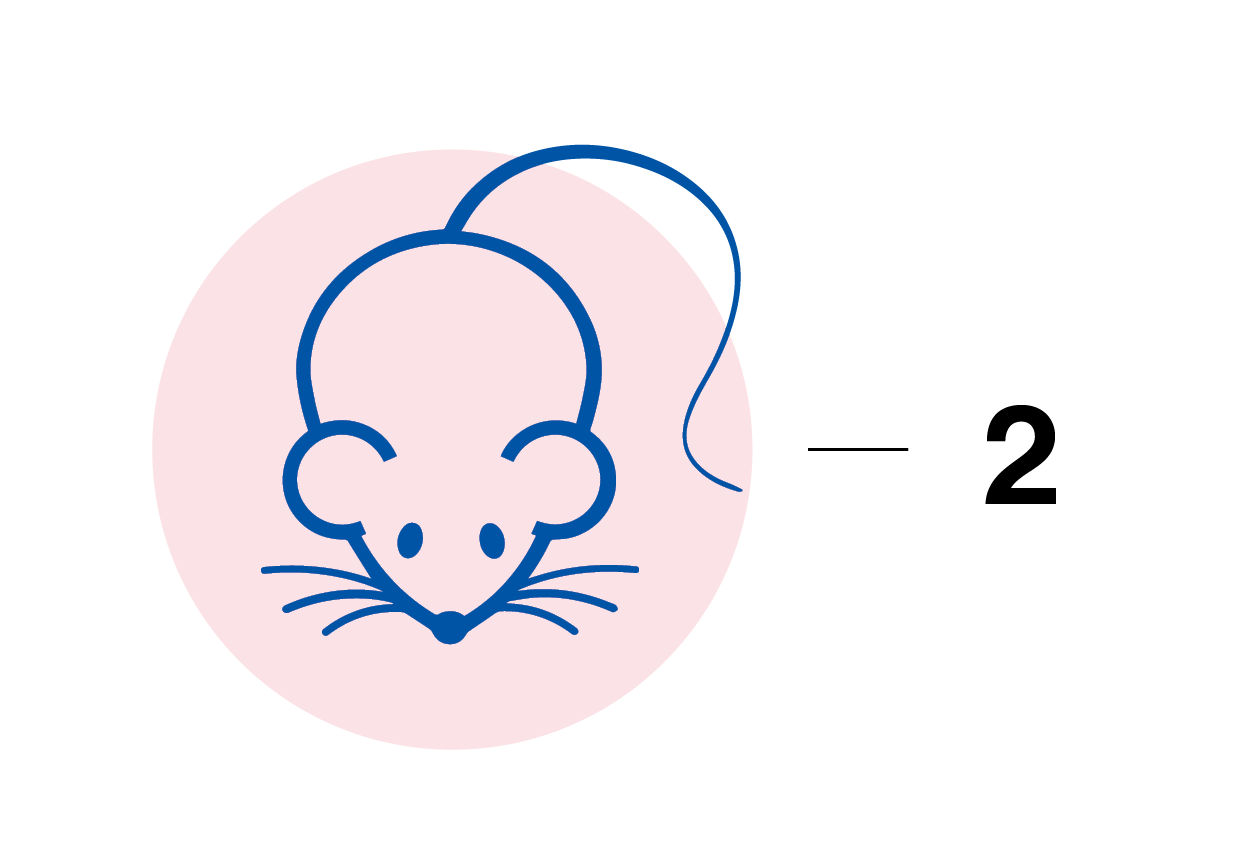
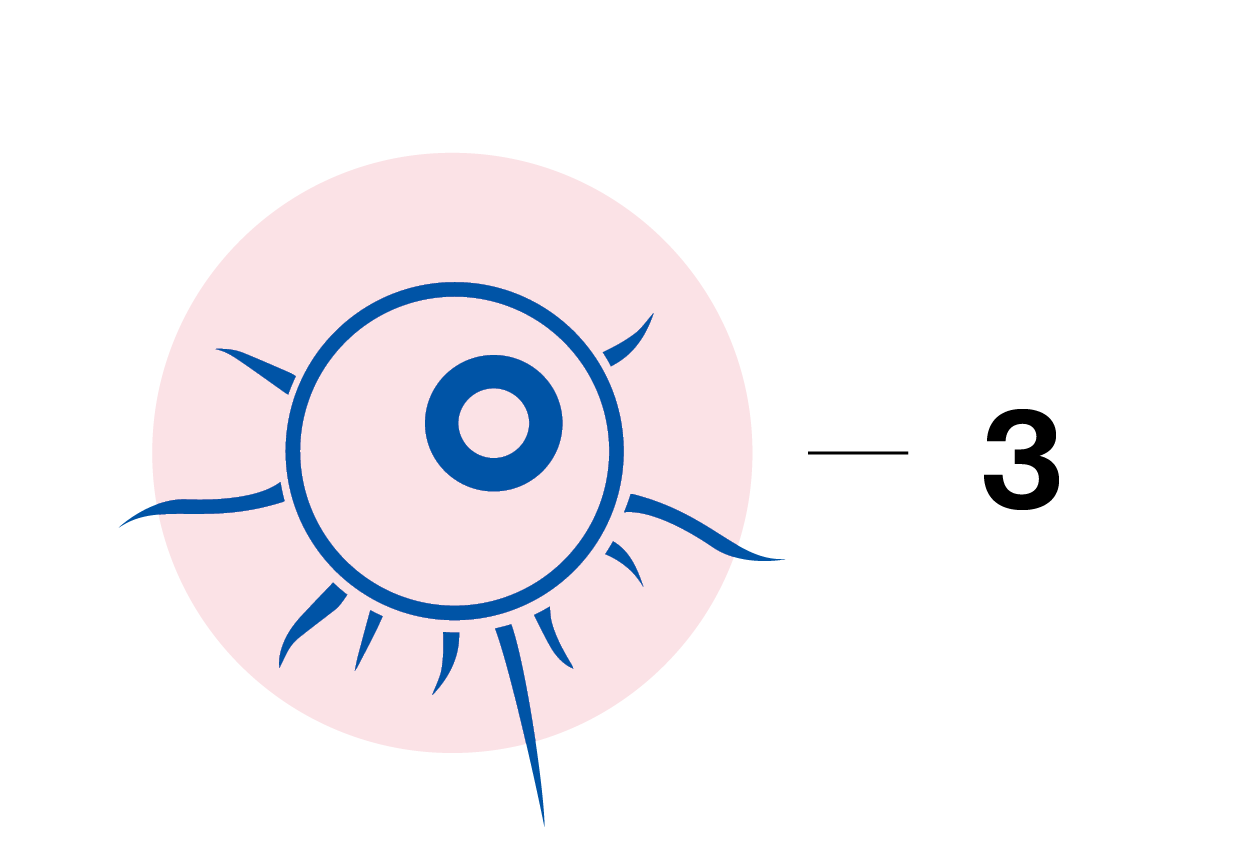

“You rejuvenate cells, but you didn’t lose the identity,” says Klausner, who calls it an “Aha!” moment. “That could be safe. And this has [now] been done with many animals. They don’t get cancer as long as you don’t go past this point.”
Exactly how this partial-reprogramming phenomenon works is now a major focus of Altos and other research organizations. During a meeting held in June at a Maine ski resort, reprogramming scientists described studying individual cells by the tens of thousands—tracking in detail what changes they undergo after they’re exposed to more limited pulses of the Yamanaka factors, or to subsets of them. Researchers from the United Kingdom with connections to Altos reported that they’d made skin cells from a 53-year-old person as youthful as those of someone just out of college. They claimed the “rejuvenation point” was reached after 13 days of exposure to Yamanaka’s factors, but no more.
One way the British team concluded that the cells had become younger was by using an “aging clock.” These are measurements that detect epigenetic modifications to DNA, the chemical marks that determine whether a given gene is on or shut off. (Epigenetic controls are part of what gives every cell its specialized identity; an olfactory neuron in your nose doesn’t need the same genes activated as a liver cell that oozes bile.) Because these markers undergo telltale changes over a lifetime, it’s possible to estimate a person’s age, or that of any animal, within a couple of years by checking just two or three hundred of them.
In part because the clocks are eerily accurate, some researchers now believe aging may be caused primarily by the gradual degradation of the epigenetic code, a little like a compact disc that’s been scratched and skips tracks. It’s an attractive theory, and not least because one thing that reprogramming does reliably is reset these marks; after a little treatment with Yamanaka factors, a cell from a 90-year-old will have the epigenetic profile of one from a teenager.
To Klausner, the fact that cells can regain a youthful epigenetic state is remarkable and likely a gateway to important new biology. “Understanding how cells remember how to be an unscratched CD” could lead to the discovery of “missing codes” regulating the whole process of aging, he thinks.
Other scientists say it’s an open question whether aging clocks measure true rejuvenation, a term they say is already being used too loosely. To Charles Brenner, a senior researcher at the City of Hope National Medical Center, people may even be falling victim to circular reasoning when they celebrate those epigenetic changes. “There isn’t a difference between saying they applied the Yamanaka factors and that they have changed the epigenetic profile, since that is what the factors do,” he says. “They then score their study as a rejuvenation success, but there is no scientific basis for doing that. They still don’t know what the intervention does. People should not be assuming more youthful scores on an epigenetic clock equate to better health or longer life expectancy.”
To answer that question, more researchers are applying bursts of the reprogramming factors to mice in bids to reverse specific diseases, or just to see what happens. In 2020, researchers at Harvard led by Sinclair reported that mice exposed to three reprogramming factors could regenerate their optic nerve and regain sight after it was crushed, something usually only a newborn rodent can do. That result earned them the cover of the journal Nature and the headline “Turning Back Time.” Others have claimed that after partial reprogramming, mice perform better on a grip test (they’re hung from tiny bars) and show signs of renewed muscle growth or even improved memory.
So far, many of these individual rejuvenation claims for live mice haven’t been widely replicated by other labs, and some people are skeptical they ever will be. Measuring the relative health of animals or their tissues isn’t necessarily a precise science. And in unblinded studies (where the researchers know which animals were treated), wishful thinking can play a role, perhaps especially if billions in venture capital dollars ride on the result. “Frankly, I doubt the reproducibility of these papers,” says Hiro Nakauchi, a professor of genetics at Stanford University. Nakauchi says he also created mice with Yamanaka factors, but he never saw any sign they got younger. He suspects that some of the most dramatic claims are “timely and catchy” but that the science that went into them is “not very accurate.”
One rejuvenation claim Brenner found troubling this year came from the Salk Institute, in La Jolla, California, which issued a press release saying a group of scientists there (who have since joined Altos) had been able to “safely and effectively reverse the aging process” in mice. It sounded as if they were describing a drug ready for market, not an exploratory form of genetic engineering. Izpisua Belmonte, the chief researcher involved, who now directs a San Diego research center for Altos, separately claimed he could “slow down aging” in the animals.
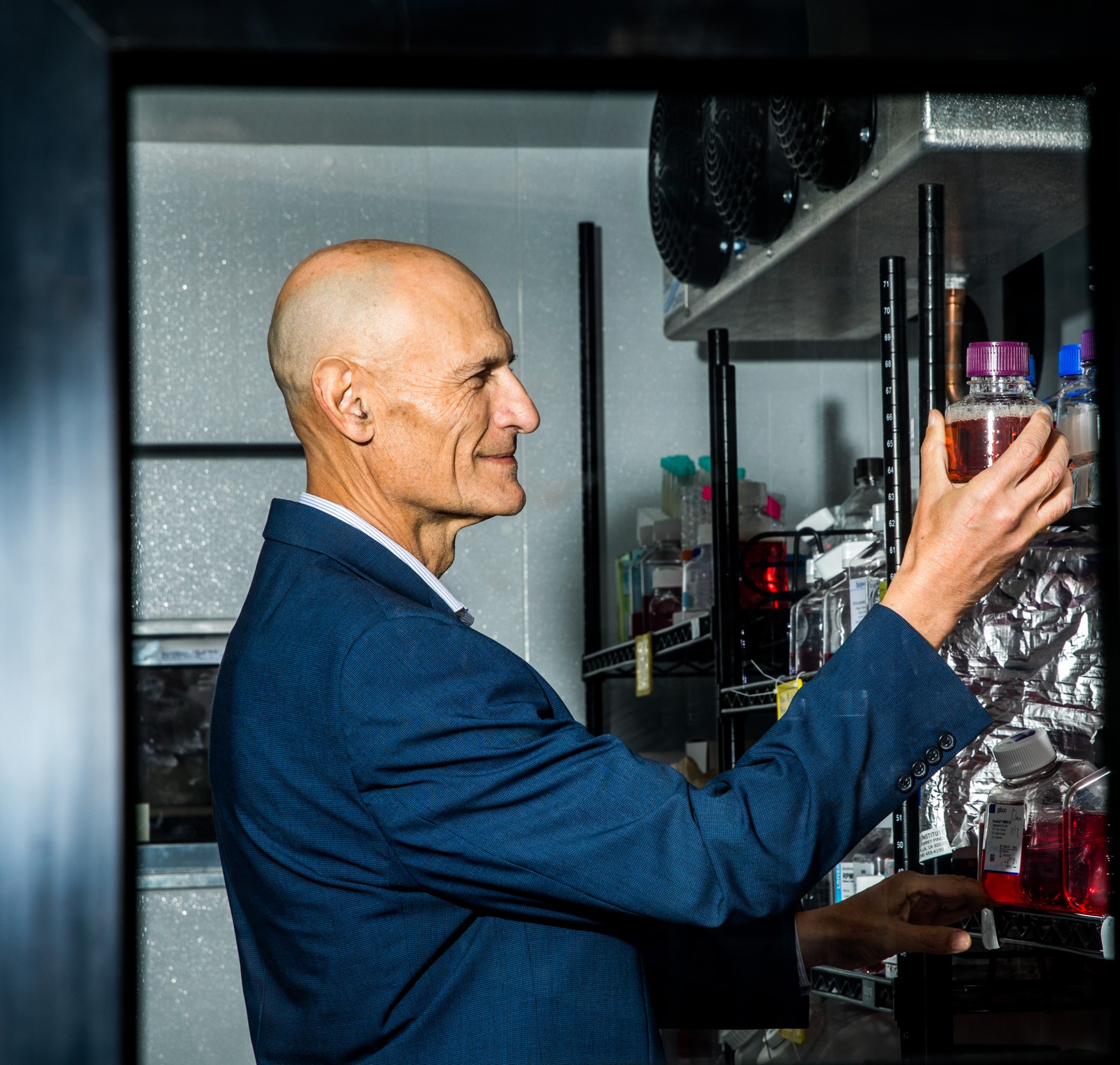
In reality, the results were less definitive than advertised. The researchers had not seen tumors, but they had significantly changed the epigenetic age of cells in just two organs: kidneys and skin. And something else about the result jumped out as puzzling to researchers like Brenner, as well as others who reviewed the paper. Despite saying they’d slowed aging, the Salk team didn’t comment on how long the partially reprogrammed mice lived. Some data in their publication suggests that the rodents’ life spans were unremarkable.
Indeed, so far no research group or company has reported normal mice living longer after being exposed to partial reprogramming. And that’s something you might expect them to do, if the alchemy is real. To João Pedro de Magalhães, at the University of Birmingham, the gap in the data is puzzling, since he believes that whether the technology affects life span “is the billion-dollar question, so to speak.” George Daley, a prominent stem-cell biologist who is dean of Harvard Medical School, wrote in response to the Salk paper that “rigorous demonstration of such an effect” was necessary to call reprogramming a true anti-aging intervention.
“Let’s not pretend that the most important thing has happened if it hasn’t,” says Martin Borch Jensen, chief scientist at Gordian Biotechnology and founder of a grant-making organization. “I mean, is there any evidence for your $3 billion project?”
Disease reversal
When Altos officially launched, in January of 2022, Klausner and other executives strove to distance the company from the concept of life-span extension, even telling reporters that Altos “is not an aging or longevity company.” They’d been stung by suggestions that the project existed to help billionaires cheat death. Instead, in its debut, Altos sought to align itself with a concept called “health span,” which means extending the number of years people spend in good health.
Klausner says reprogramming promises an approach to “disease reversal” that might be applied regardless of how old someone is. If any extension in longevity resulted, it would be only “an accidental consequence” of making people healthier, according to comments made by Hans Bishop, the president of Altos.
Altos seeks to align itself with a concept called health span, which means extending the number of years that people spend in good health as they age.
In an email, Klausner even said that the company will not try to determine whether reprogramming generally extends life. “We have no intention of ever doing life-span extension studies,” he wrote. He noted that an experiment would be impractical—such a test in humans could take too long. Instead, Altos hopes to carry out “very specific” attempts to reverse certain diseases or disabilities, using familiar frameworks for clinical trials that are accepted by regulators and attractive to large drug companies.
To some observers, like Magalhães, Altos is just trying to position anti-aging technology in a guise that’s credible, even though some of the company’s own scientists, like Izpisua Belmonte, have predicted that people will live to 130. “It is curious psychology,” Magalhães says. “We say we are not trying to cure aging, just make people healthy longer. But I don’t think we should be ashamed about what we are trying to do, which is to slow down aging. And rejuvenation, if we achieve it, would be the best way of doing that.”
Klausner told me he thinks the longevity–versus–health span debate is “a distraction.” The average American lives for around 77 years, which is still decades short of the longest lives (the oldest person on record died at 122). That means there are plenty of healthy years to be gained before anyone reaches an unnatural birthday. Nor are gains in average life expectancy unusual—that figure has roughly doubled since 1850, thanks mostly to vaccines, antibiotics, and public health advances.
“There is a lot of room for average life span to increase,” Klausner says, “and that is essentially the goal of all medicine, whether curing cancer or heart disease.”
You may like
-


How a half-trillion dollars is transforming climate technology
-
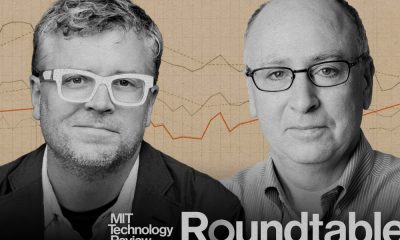

Introducing MIT Technology Review Roundtables, real-time conversations about what’s next in tech
-


Want agency in the AI age? Get ready to fight
-


Revived, implanted, and analyzed—the personal stories at the heart of cutting-edge biotech
-


Two companies can now sell lab-grown chicken in the US
-


Scientists Identify Key Process Driving The Progression Of Huntington’s Disease

My senior spring in high school, I decided to defer my MIT enrollment by a year. I had always planned to take a gap year, but after receiving the silver tube in the mail and seeing all my college-bound friends plan out their classes and dorm decor, I got cold feet. Every time I mentioned my plans, I was met with questions like “But what about school?” and “MIT is cool with this?”
Yeah. MIT totally is. Postponing your MIT start date is as simple as clicking a checkbox.
COURTESY PHOTO
Now, having finished my first year of classes, I’m really grateful that I stuck with my decision to delay MIT, as I realized that having a full year of unstructured time is a gift. I could let my creative juices run. Pick up hobbies for fun. Do cool things like work at an AI startup and teach myself how to create latte art. My favorite part of the year, however, was backpacking across Europe. I traveled through Austria, Slovakia, Russia, Spain, France, the UK, Greece, Italy, Germany, Poland, Romania, and Hungary.
Moreover, despite my fear that I’d be losing a valuable year, traveling turned out to be the most productive thing I could have done with my time. I got to explore different cultures, meet new people from all over the world, and gain unique perspectives that I couldn’t have gotten otherwise. My travels throughout Europe allowed me to leave my comfort zone and expand my understanding of the greater human experience.
“In Iceland there’s less focus on hustle culture, and this relaxed approach to work-life balance ends up fostering creativity. This was a wild revelation to a bunch of MIT students.”
When I became a full-time student last fall, I realized that StartLabs, the premier undergraduate entrepreneurship club on campus, gives MIT undergrads a similar opportunity to expand their horizons and experience new things. I immediately signed up. At StartLabs, we host fireside chats and ideathons throughout the year. But our flagship event is our annual TechTrek over spring break. In previous years, StartLabs has gone on TechTrek trips to Germany, Switzerland, and Israel. On these fully funded trips, StartLabs members have visited and collaborated with industry leaders, incubators, startups, and academic institutions. They take these treks both to connect with the global startup sphere and to build closer relationships within the club itself.
Most important, however, the process of organizing the TechTrek is itself an expedited introduction to entrepreneurship. The trip is entirely planned by StartLabs members; we figure out travel logistics, find sponsors, and then discover ways to optimize our funding.

COURTESY PHOTO
In organizing this year’s trip to Iceland, we had to learn how to delegate roles to all the planners and how to maintain morale when making this trip a reality seemed to be an impossible task. We woke up extra early to take 6 a.m. calls with Icelandic founders and sponsors. We came up with options for different levels of sponsorship, used pattern recognition to deduce the email addresses of hundreds of potential contacts at organizations we wanted to visit, and all got scrappy with utilizing our LinkedIn connections.
And as any good entrepreneur must, we had to learn how to be lean and maximize our resources. To stretch our food budget, we planned all our incubator and company visits around lunchtime in hopes of getting fed, played human Tetris as we fit 16 people into a six-person Airbnb, and emailed grocery stores to get their nearly expired foods for a discount. We even made a deal with the local bus company to give us free tickets in exchange for a story post on our Instagram account.
Tech
The Download: spying keyboard software, and why boring AI is best
Published
8 months agoon
22 August 2023By
Terry Power
This is today’s edition of The Download, our weekday newsletter that provides a daily dose of what’s going on in the world of technology.
How ubiquitous keyboard software puts hundreds of millions of Chinese users at risk
For millions of Chinese people, the first software they download onto devices is always the same: a keyboard app. Yet few of them are aware that it may make everything they type vulnerable to spying eyes.
QWERTY keyboards are inefficient as many Chinese characters share the same latinized spelling. As a result, many switch to smart, localized keyboard apps to save time and frustration. Today, over 800 million Chinese people use third-party keyboard apps on their PCs, laptops, and mobile phones.
But a recent report by the Citizen Lab, a University of Toronto–affiliated research group, revealed that Sogou, one of the most popular Chinese keyboard apps, had a massive security loophole. Read the full story.
—Zeyi Yang
Why we should all be rooting for boring AI
Earlier this month, the US Department of Defense announced it is setting up a Generative AI Task Force, aimed at “analyzing and integrating” AI tools such as large language models across the department. It hopes they could improve intelligence and operational planning.
But those might not be the right use cases, writes our senior AI reporter Melissa Heikkila. Generative AI tools, such as language models, are glitchy and unpredictable, and they make things up. They also have massive security vulnerabilities, privacy problems, and deeply ingrained biases.
Applying these technologies in high-stakes settings could lead to deadly accidents where it’s unclear who or what should be held responsible, or even why the problem occurred. The DoD’s best bet is to apply generative AI to more mundane things like Excel, email, or word processing. Read the full story.
This story is from The Algorithm, Melissa’s weekly newsletter giving you the inside track on all things AI. Sign up to receive it in your inbox every Monday.
The ice cores that will let us look 1.5 million years into the past
To better understand the role atmospheric carbon dioxide plays in Earth’s climate cycles, scientists have long turned to ice cores drilled in Antarctica, where snow layers accumulate and compact over hundreds of thousands of years, trapping samples of ancient air in a lattice of bubbles that serve as tiny time capsules.
By analyzing those cores, scientists can connect greenhouse-gas concentrations with temperatures going back 800,000 years. Now, a new European-led initiative hopes to eventually retrieve the oldest core yet, dating back 1.5 million years. But that impressive feat is still only the first step. Once they’ve done that, they’ll have to figure out how they’re going to extract the air from the ice. Read the full story.
—Christian Elliott
This story is from the latest edition of our print magazine, set to go live tomorrow. Subscribe today for as low as $8/month to ensure you receive full access to the new Ethics issue and in-depth stories on experimental drugs, AI assisted warfare, microfinance, and more.
The must-reads
I’ve combed the internet to find you today’s most fun/important/scary/fascinating stories about technology.
1 How AI got dragged into the culture wars
Fears about ‘woke’ AI fundamentally misunderstand how it works. Yet they’re gaining traction. (The Guardian)
+ Why it’s impossible to build an unbiased AI language model. (MIT Technology Review)
2 Researchers are racing to understand a new coronavirus variant
It’s unlikely to be cause for concern, but it shows this virus still has plenty of tricks up its sleeve. (Nature)
+ Covid hasn’t entirely gone away—here’s where we stand. (MIT Technology Review)
+ Why we can’t afford to stop monitoring it. (Ars Technica)
3 How Hilary became such a monster storm
Much of it is down to unusually hot sea surface temperatures. (Wired $)
+ The era of simultaneous climate disasters is here to stay. (Axios)
+ People are donning cooling vests so they can work through the heat. (Wired $)
4 Brain privacy is set to become important
Scientists are getting better at decoding our brain data. It’s surely only a matter of time before others want a peek. (The Atlantic $)
+ How your brain data could be used against you. (MIT Technology Review)
5 How Nvidia built such a big competitive advantage in AI chips
Today it accounts for 70% of all AI chip sales—and an even greater share for training generative models. (NYT $)
+ The chips it’s selling to China are less effective due to US export controls. (Ars Technica)
+ These simple design rules could turn the chip industry on its head. (MIT Technology Review)
6 Inside the complex world of dissociative identity disorder on TikTok
Reducing stigma is great, but doctors fear people are self-diagnosing or even imitating the disorder. (The Verge)
7 What TikTok might have to give up to keep operating in the US
This shows just how hollow the authorities’ purported data-collection concerns really are. (Forbes)
8 Soldiers in Ukraine are playing World of Tanks on their phones
It’s eerily similar to the war they are themselves fighting, but they say it helps them to dissociate from the horror. (NYT $)
9 Conspiracy theorists are sharing mad ideas on what causes wildfires
But it’s all just a convoluted way to try to avoid having to tackle climate change. (Slate $)
10 Christie’s accidentally leaked the location of tons of valuable art 

Seemingly thanks to the metadata that often automatically attaches to smartphone photos. (WP $)
Quote of the day
“Is it going to take people dying for something to move forward?”
—An anonymous air traffic controller warns that staffing shortages in their industry, plus other factors, are starting to threaten passenger safety, the New York Times reports.
The big story
Inside effective altruism, where the far future counts a lot more than the present

October 2022
Since its birth in the late 2000s, effective altruism has aimed to answer the question “How can those with means have the most impact on the world in a quantifiable way?”—and supplied methods for calculating the answer.
It’s no surprise that effective altruisms’ ideas have long faced criticism for reflecting white Western saviorism, alongside an avoidance of structural problems in favor of abstract math. And as believers pour even greater amounts of money into the movement’s increasingly sci-fi ideals, such charges are only intensifying. Read the full story.
—Rebecca Ackermann
We can still have nice things
A place for comfort, fun and distraction in these weird times. (Got any ideas? Drop me a line or tweet ’em at me.)
+ Watch Andrew Scott’s electrifying reading of the 1965 commencement address ‘Choose One of Five’ by Edith Sampson.
+ Here’s how Metallica makes sure its live performances ROCK. ($)
+ Cannot deal with this utterly ludicrous wooden vehicle.
+ Learn about a weird and wonderful new instrument called a harpejji.
Tech
Why we should all be rooting for boring AI
Published
8 months agoon
22 August 2023By
Terry Power
This story originally appeared in The Algorithm, our weekly newsletter on AI. To get stories like this in your inbox first, sign up here.
I’m back from a wholesome week off picking blueberries in a forest. So this story we published last week about the messy ethics of AI in warfare is just the antidote, bringing my blood pressure right back up again.
Arthur Holland Michel does a great job looking at the complicated and nuanced ethical questions around warfare and the military’s increasing use of artificial-intelligence tools. There are myriad ways AI could fail catastrophically or be abused in conflict situations, and there don’t seem to be any real rules constraining it yet. Holland Michel’s story illustrates how little there is to hold people accountable when things go wrong.
Last year I wrote about how the war in Ukraine kick-started a new boom in business for defense AI startups. The latest hype cycle has only added to that, as companies—and now the military too—race to embed generative AI in products and services.
Earlier this month, the US Department of Defense announced it is setting up a Generative AI Task Force, aimed at “analyzing and integrating” AI tools such as large language models across the department.
The department sees tons of potential to “improve intelligence, operational planning, and administrative and business processes.”
But Holland Michel’s story highlights why the first two use cases might be a bad idea. Generative AI tools, such as language models, are glitchy and unpredictable, and they make things up. They also have massive security vulnerabilities, privacy problems, and deeply ingrained biases.
Applying these technologies in high-stakes settings could lead to deadly accidents where it’s unclear who or what should be held responsible, or even why the problem occurred. Everyone agrees that humans should make the final call, but that is made harder by technology that acts unpredictably, especially in fast-moving conflict situations.
Some worry that the people lowest on the hierarchy will pay the highest price when things go wrong: “In the event of an accident—regardless of whether the human was wrong, the computer was wrong, or they were wrong together—the person who made the ‘decision’ will absorb the blame and protect everyone else along the chain of command from the full impact of accountability,” Holland Michel writes.
The only ones who seem likely to face no consequences when AI fails in war are the companies supplying the technology.
It helps companies when the rules the US has set to govern AI in warfare are mere recommendations, not laws. That makes it really hard to hold anyone accountable. Even the AI Act, the EU’s sweeping upcoming regulation for high-risk AI systems, exempts military uses, which arguably are the highest-risk applications of them all.
While everyone is looking for exciting new uses for generative AI, I personally can’t wait for it to become boring.
Amid early signs that people are starting to lose interest in the technology, companies might find that these sorts of tools are better suited for mundane, low-risk applications than solving humanity’s biggest problems.
Applying AI in, for example, productivity software such as Excel, email, or word processing might not be the sexiest idea, but compared to warfare it’s a relatively low-stakes application, and simple enough to have the potential to actually work as advertised. It could help us do the tedious bits of our jobs faster and better.
Boring AI is unlikely to break as easily and, most important, won’t kill anyone. Hopefully, soon we’ll forget we’re interacting with AI at all. (It wasn’t that long ago when machine translation was an exciting new thing in AI. Now most people don’t even think about its role in powering Google Translate.)
That’s why I’m more confident that organizations like the DoD will find success applying generative AI in administrative and business processes.
Boring AI is not morally complex. It’s not magic. But it works.
Deeper Learning
AI isn’t great at decoding human emotions. So why are regulators targeting the tech?
Amid all the chatter about ChatGPT, artificial general intelligence, and the prospect of robots taking people’s jobs, regulators in the EU and the US have been ramping up warnings against AI and emotion recognition. Emotion recognition is the attempt to identify a person’s feelings or state of mind using AI analysis of video, facial images, or audio recordings.
But why is this a top concern? Western regulators are particularly concerned about China’s use of the technology, and its potential to enable social control. And there’s also evidence that it simply does not work properly. Tate Ryan-Mosley dissected the thorny questions around the technology in last week’s edition of The Technocrat, our weekly newsletter on tech policy.
Bits and Bytes
Meta is preparing to launch free code-generating software
A version of its new LLaMA 2 language model that is able to generate programming code will pose a stiff challenge to similar proprietary code-generating programs from rivals such as OpenAI, Microsoft, and Google. The open-source program is called Code Llama, and its launch is imminent, according to The Information. (The Information)
OpenAI is testing GPT-4 for content moderation
Using the language model to moderate online content could really help alleviate the mental toll content moderation takes on humans. OpenAI says it’s seen some promising first results, although the tech does not outperform highly trained humans. A lot of big, open questions remain, such as whether the tool can be attuned to different cultures and pick up context and nuance. (OpenAI)
Google is working on an AI assistant that offers life advice
The generative AI tools could function as a life coach, offering up ideas, planning instructions, and tutoring tips. (The New York Times)
Two tech luminaries have quit their jobs to build AI systems inspired by bees
Sakana, a new AI research lab, draws inspiration from the animal kingdom. Founded by two prominent industry researchers and former Googlers, the company plans to make multiple smaller AI models that work together, the idea being that a “swarm” of programs could be as powerful as a single large AI model. (Bloomberg)
